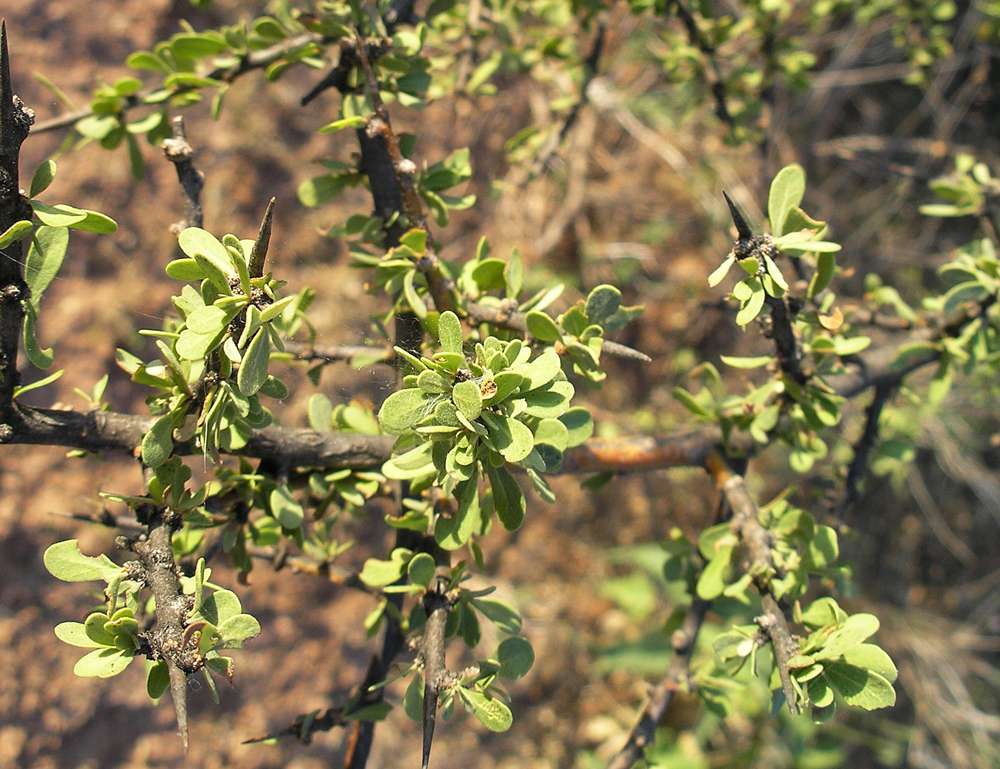Sideroxylon
|
Family: Sapotaceae |
Shrubs or trees. Stems not armed or armed with thorns, glabrous or glabrate to tomentose, villous, or strigose, often glabrescent (hairs tawny or reddish brown to brown). Leaves deciduous or persistent, alternate and/or sometimes fascicled on short shoots; stipules absent; petiole present; blade: base rounded, obtuse, cuneate, or acute to attenuate, apex rounded to obtuse, sometimes retuse, or acute to acuminate, surfaces glabrous or glabrate to villous, sericeous, or strigose abaxially, usually glabrose or glabrate, sometimes glabrescent adaxially. Inflorescences fascicles. Flowers: sepals (4-)5(-6)[-8] in 1 whorl, imbricate, glabrous or glabrate to hairy abaxially; petals (4-)5(-6), white or cream to yellowish or yellow, lobes longer than corolla tube, each divided into 1 median and 2 lateral segments or lateral segments vestigial or absent, median segment equaling or larger than lateral segments; stamens (4-)5(-6), distinct distal to corolla tube; staminodes (4-)5(-6), alternating with stamens, inflexed, petaloid, lanceolate, glabrous [hairy]; pistil (4-)5(-8)-carpellate; ovary (4-)5(-8)-locular, glabrous or hairy. Berries yellow to orange or purple to purplish black or black, subglobose or obovoid to ellipsoid, ovoid, or oblong, (frequently with apiculate stylar remnant), glabrous or glabrate. Seeds 1-2, buff to light brown, ellipsoid; hilum ovoid to ellipsoid; embryo vertical, oblique, or horizontal; endosperm present or absent. x = 12. The generic concept of T. D. Pennington (1990, 1991) followed here includes nine species assigned previously to Bumelia, and one species each placed formerly in Dipholis and Mastichodendron (J. K. Small 1900; R. B. Clark 1942; A. Cronquist 1945b, 1945c). Characters used to segregate those genera included twig thorniness, corolla lobe segmentation, ovary indument, and endosperm presence. These characters vary considerably among species and segregate genera, which resulted in Pennington´s (1990) adoption of a broad concept of Sideroxylon without recognition of infrageneric groups. The division of the corolla lobes into three segments (shared with many species of Manilkara), the single whorl of five sepals, and the basal or basal-ventral seed scar represent a combination of character traits that defines Sideroxylon sensu Pennington (1990). U. Swenson and A. A. Anderberg (2005) provided strong support for a monophyletic tribe Sideroxyleae (12 species sampled) and a broad concept of Sideroxylon that included segregate genera, but they could not delineate Sideroxylon in the narrow sense with any synapomorphic morphological characters. North American species of Sideroxylon have been described and differentiated predominantly using vegetative characters such as thorn presence, leaf length and width, leaf venation pattern, and twig and leaf indument density and color (J. K. Small 1900; R. B. Clark 1942; A. Cronquist 1945b, 1945c; T. D. Pennington 1990; R. P. Wunderlin and B. F. Hansen 2003). Corolla size and segmentation of the lobes, ovary indument, and fruit shape and length have been used to a lesser extent to differentiate species and infraspecific taxa. Character intergradation and polymorphism are especially marked among S. lanuginosum, S. lycioides, S. reclinatum, S. tenax, and S. thornei, resulting in identification difficulties and hypotheses of interspecific hybridization (Clark; Cronquist 1949). Some species of Sideroxylon are sources of dried sap for chewing gum, wood for building materials, and edible fruits. Sideroxylon dulcificum A. de Candolle has fruits with flavor ranging from sweet to bitter, making it important in the food industry.
|

